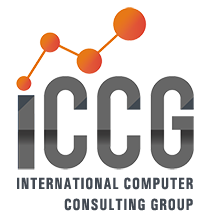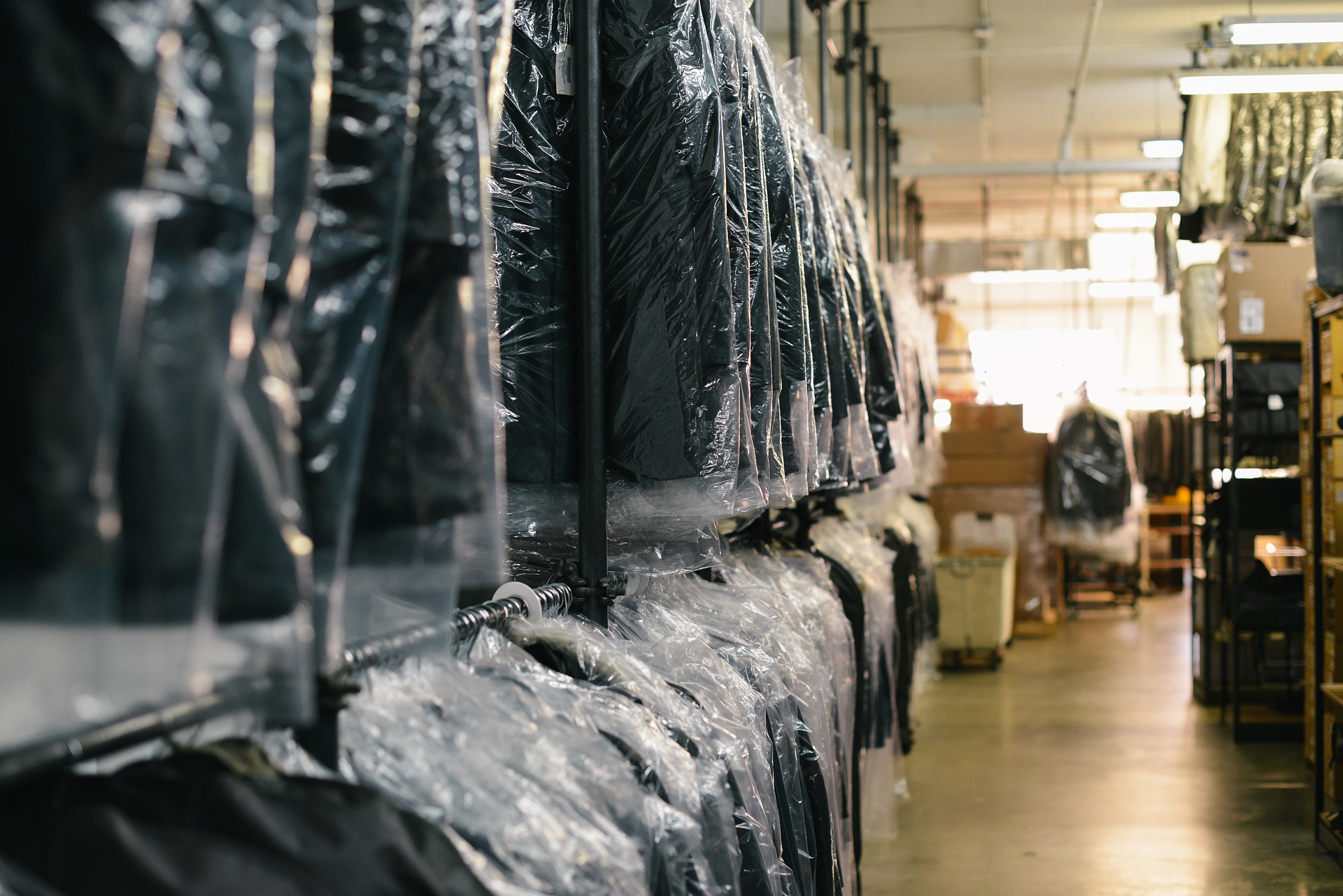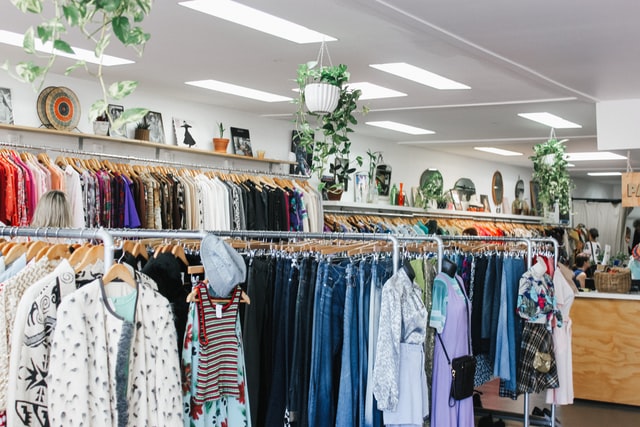The fashion and apparel industry is known for its fast-paced nature, constant trend changes, and ever-evolving consumer demands. Fashion brands need to remain agile, innovative, and efficient to stay ahead of competitors while managing complexities in design, production, supply chain, and retail. To meet these challenges head-on, many fashion brands are turning to specialized Enterprise Resource Planning (ERP) systems, designed to optimize operations and enhance collaboration.
Unlocking Fashion Success: Key ERP Features Every Apparel Brand Needs and How Infor ERP Delivers
Topics: Fashion & Apparel, Infor, Fashion PLM, Infor CloudSuite ERP, Infor Partner, partnership, blog
Independent Computer Consulting Group, Inc. (ICCG) Adds Infor® PLM For Fashion To Its Solution Portfolio
This complete product lifecycle solution helps reduce the time from inspiration to the launch of new styles and SKUs for the fashion industry vertically.
Philadelphia, PA – February 26, 2024 -- Independent Computer Consulting Group, Inc. (“ICCG”) is pleased to announce the addition of Infor‘s best-of-breed solution - Fashion Product Lifecycle Management (PLM), to its solution portfolio for its Fashion, Home Décor, Footwear, and Luxury products customers. This, along with Cloud suite Fashion (Infor M3) and Infor Supply Chain Management suite, completes the solution suite for the Fashion Industry vertical. We extend Fashion to Home Décor, Furnishing, Footwear, and Luxury products.
Infor PLM for Fashion was created using the latest Infor technologies to help fashion brands, manufacturers, and private brand retailers develop styles more quickly and efficiently and improve speed to market. This is one of the key competitive differentiators for Fashion designers, manufacturers, and distributors.
ICCG Inc. is an Infor enterprise software-focused consulting firm with a global presence and a track record of over 2000 business transformation projects, with execution across not only Infor M3 ERP systems but also Supply Chain Planning Systems, Warehouse Management solutions, and now PLM solutions deployments.
Topics: PLM, Fashion & Apparel, Fashion PLM, Fashion, Infor CloudSuite PLM for Fashion, ICCG, Infor Partner
Warehouse Future Proofing With A Cloud-Based WMS
Even when your warehouse operations seem to be running smoothly, there is always room for improvement and a need to stay up to date with innovation. While steps are taken to keep warehouse operations at peak performance, when fulfilment times and levels are jeopardized, it’s still up to you and your team to race to recover, to ensure actions to get back on track are taken correctly so that product can make its way out the door, and time is always working against you.
If your organization previously reviewed and dismissed the value of moving your warehouse management system (WMS) to the cloud, it’s time to reevaluate. Decisions that seemed to make sense last year or even last quarter, likely look very different with new challenges emerging over the past several months. By empowering critical systems like a WMS with cloud capabilities, your organization can scale quickly, maximize productivity, and minimize outages and downtime to prevent bringing the company’s mission-critical operations to its knees.
Topics: Digital Transformation, ERP, Manufacturing, Distribution, Rentals & Equipment, Warehouse Management Systems, Fashion & Apparel, Industrial Manufacturing, Digital Manufacturing, Infor M3 ERP, Enterprise Software, Retail Supply Chain, WMS
The fashion industry thrives on innovation. It’s what the consumer wants from us—something new, not just clones or replacements for worn-out items. New product introductions are critical to business success, but only half of them achieve the profit objectives set before launch. To improve the ratio of hits to disappointments, it is essential to listen to the consumer and collaborate with the supply chain.
The consumer sets the bar for value and the supply chain determines whether you meet or miss it. The next decade will call for significant materials and process innovations at both the micro (product) and the macro (enterprise, supply chain, and industry) level. If shorter, more frequent product introduction cycles were the only challenge… but they’re not. At strategic planning levels, the industry must figure out how to convert to more sustainable ways of doing business, starting with raw materials and research and development and expanding product lifecycle management practices to include recycling. At the operational level, rethink the way you work internally and collaborate with supply chain partners to eliminate waste throughout the value chain. If a process doesn’t add value for the consumer, don’t do it. Optimize the entire value chain and focus it on value creation. Innovations arise at every stage, when all the partners can see the value chain as a whole.
Topics: Fashion & Retail, Distribution, Supply Chain, Fashion & Apparel, Cloudsuite Fashion & Apparel, Infor CloudSuite PLM for Fashion, Enterprise Software, Supply Chain Management
Questions Manufacturers Should Look For Digital Transformation Success
1. Are we organizationally ready for significant change?
Organizations are only as good as their people, and manufacturers must look carefully at whether they have the right people and culture to support a different way of doing things. It is the people who will be responsible for implementing change, and they should be ready, committed, and on board with any type of transformation plan.
An organization’s culture can make or break a digital transformation project and “organizational change management” is one of the key components of such a project. Organizations should aim for an inclusive culture where people feel like they are key contributors to the company’s future success.
To achieve this, management teams should encourage a culture of openness to help employees step forward with their ideas. All change, and all transformation, starts with an idea – so it’s important for people to feel empowered to put their ideas out in the open.
Topics: Digital Transformation, ERP, Manufacturing, Distribution, Rentals & Equipment, Supply Chain, Fashion & Apparel, Industrial Manufacturing, Digital Manufacturing, Infor M3 ERP, Enterprise Software, Retail Supply Chain, WMS, Supply Chain Management
Supply Chain Excellence And Network Collaboration
As fashion organizations grow to introduce new products or clothing lines, acquire other companies, shift priorities, and change channels to market, key stakeholders can be left out of the conversation. A networked approach to running your company can solve these problems. Collaborative networks work because they engage internal and external partners, workers, and stakeholders, helping to incentivize and execute supply chain processes more effectively than ever before.
New insights will continue to emerge as consumer behaviors shift and production opportunities evolve, but a continuously synchronized and updated network can keep you agile from sketch to store by making critical information accessible to colleagues, organizations, suppliers, and customers. Collaborative networks work to improve customer service, maximize margins, and minimize loss attributed to miscommunications such as missed inventory targets, downtime, spoilage, and other challenges.
Topics: ERP, Fashion & Retail, Distribution, Supply Chain, Fashion & Apparel, Supply Chain Visibility, Supply Chain Network, Cloudsuite Fashion & Apparel, Infor CloudSuite PLM for Fashion, Infor CloudSuite Fashion PLM, Enterprise Software, Infor CloudSuite Fashion, Supply Chain Operations, Supply Chain Management, Infor CloudSuite M3, Infor CloudSuite ERP
As industry attitudes and consumer behaviors change, so does the challenge of sustaining a business in the fashion industry. The global health crisis has accelerated the need for fashion and retail brand owners to reconsider their current business models to satisfy their digitally native consumers while maintaining omni-channel supply and ensuring sustainable production.
Whether large or small, fashion brands can turn these challenges into opportunities by transforming their business models. How does your organization meet the expectations and desires of today’s digital consumers? Are you still using old technology that might have served you well in the past but is now beyond its shelf life? If you already have an ERP system in place, there’s a good chance it’s no longer able to keep up with your business needs and growth aspirations.
Topics: ERP, Fashion & Retail, Distribution, Supply Chain, Fashion & Apparel, Enterprise Resource Planning, Fashion PLM, Cloudsuite Fashion & Apparel, Infor M3 ERP, Infor CloudSuite PLM for Fashion, Infor CloudSuite Fashion PLM, Enterprise Software, Infor CloudSuite Fashion, Supply Chain Management
Generating Better Supply Chain Value - Three Scenarios To Look For
Digitizing core processes in combination with trading partner connectivity, helps supply chain leaders increase responsiveness and adaptability. As more organizations look to remove manual tasks from their operations, the ability to update suppliers and trading partners in real-time allows supply chain processes to become more efficient. Here are three scenarios where moving to a network platform have helped companies generate additional value across their supply chain.
- A footwear provider experiencing rapid growth realized spreadsheets and manual processes were no longer sufficient to support increase demand and future progression. The brand digitally transformed sourcing, procurement, accounts payable, finance, and supplier management processes to support scale. The ability to digitally collaborate on orders, invoices, settlements, and ASN creation was foundational to the transformation. Witnessing 4X growth, the company today has 99.8% invoice accuracy and spends approximately 30 minutes per day processing invoices.
- A major global sports apparel brand sought to solidify the health of its supply base by ensuring access to capital. Utilizing a multi-enterprise network allowed the company to connect all parties and digitized document flow, enabling automated financing and settlement. A diverse portfolio of finance providers was plugged in to create a significant pool of credit and programs to meet varying needs. In doing so, the brand was able to enhance the financial health of its suppliers while deploying its own capital preservation program.
- An outdoor gear manufacturer having automated its PO, invoice, and settlement processes to generate efficiency was seeking further avenues to improve margins. It leveraged existing transaction data to auto-populate ASNs and packing and shipping instructions, enabling direct shipments from the factory. As a result, plans for new distribution center were deemed no longer necessary due to increased efficiency.
Topics: ERP, Manufacturing, Distribution, Rentals & Equipment, Supply Chain, Fashion & Apparel, Infor M3 ERP, Enterprise Software, Retail Supply Chain, WMS, Supply Chain Management
Importance Of Digital Transformation Projects: Start With Your People
Know you want to transform but don't know where to start? Want to gain $9-12 for every dollar you spend? Read on to find out why starting with your people is the best first step to prioritizing digital transformation projects.
Digital transformation is at the top of the to-do lists of most companies, but one topic that is often missing from a discussion on digital transformation is which areas to prioritize. Most businesses can’t afford to completely overhaul a core function of the enterprise top to bottom, along with the technology that supports it, at any one time. Instead, they’ll target specific areas for transformation. That approach minimizes disruption to the business, keeps costs manageable, and helps the business apply lessons learned to future transformation projects. The question, though, is which areas to target first?
Topics: Digital Transformation, ERP, Manufacturing, Distribution, Rentals & Equipment, Supply Chain, Fashion & Apparel, Industrial Manufacturing, Digital Manufacturing, Infor M3 ERP, Enterprise Software, Retail Supply Chain, WMS, Supply Chain Management
How Fashion Brands Can Collaborate Their Way To Greatness
The modern fashion consumer, often referred to as the conscious consumer, expects more than a transactional relationship with the brands they purchase garments from. They want an authentic, personalized, and seamless shopping journey that reflects the specific context of how and why they choose a brand. These desired brand attributes require control beyond brick and mortar supply and present challenges to the fashion brand’s entire supply chain. A label is no longer reason enough to secure a sale. Customers want to know more about the companies from which they are buying, and have developed more sophisticated expectations around the environmental impact, product sustainability, and circularity that constitutes a modern brand experience.
Topics: Fashion & Retail, Distribution, Supply Chain, Fashion & Apparel, Cloudsuite Fashion & Apparel, Infor CloudSuite PLM for Fashion, Enterprise Software, Supply Chain Management



.jpg)






